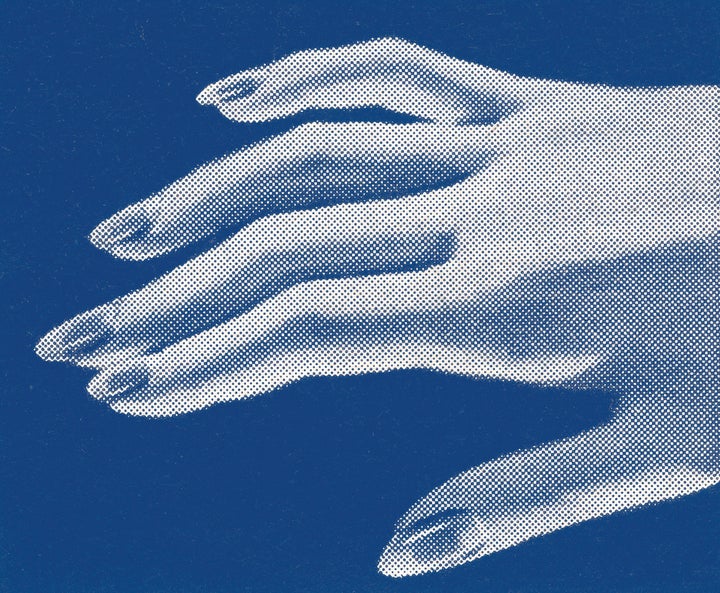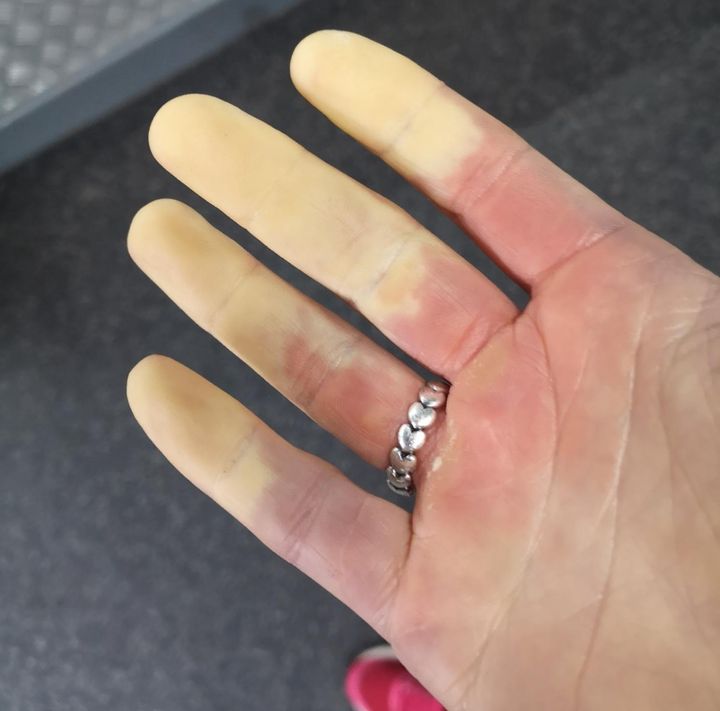
Ami Hook-Ireland first noticed something wasn’t quite right in November 2009 when she woke up with “extremely painful feet” and “pins and needles”. Her feet were ice cold to the touch and her toes had turned red. It would take three and a half years of repeat visits to her GP, and two appointments with a specialist rheumatologist, to be diagnosed. She has Raynaud’s disease.
The condition (pronounced ‘ray-nose’) is thought to impact one in five people, says Dr Rachel Byng-Maddick, consultant rheumatologist at the private Lister Hospital. Yet a staggering number of people haven’t heard of it. “Public awareness of Raynaud’s, and the diseases it can be associated with, are low,” says Dr Byng-Maddick.
A 2017 survey by Scleroderma and Raynaud’s UK (SRUK) found just 4% of people could confidently identify its symptoms. Hook-Ireland, 24, had never heard of it prior to her diagnosis. But while a decade on from the first signs, she still suffers with symptoms, she says she is no longer in so much pain.
What causes Raynaud’s?
Raynaud’s occurs when small blood vessels in extremities of the body – such as your hands and feet – are over-sensitive to changes in temperature.
“Fingers or toes become numb and painful and change colour, blue or white, then turn bright red on rewarming,” says Dr Byng-Maddick. In more extreme cases, Raynaud’s also affects the nose and ears. The condition is most common in young women aged 15-30 years old. An attack can be uncomfortable, sometimes painful. It can also be debilitating, making even simple, everyday tasks like buttoning a jacket or unzipping a purse difficult.
There are two types of Raynaud’s – primary and secondary. The key difference between the two is that in primary Raynaud’s the cause isn’t known, while in secondary Raynaud’s it’s caused by an underlying disease, condition or some other factor. Many of the symptoms of Raynaud’s – both the primary and secondary types – are relatively common, and not always a sign of anything more serious, which is one of the reasons why people with the condition can go undiagnosed for so long.
What are the symptoms of Raynaud’s?
Cold fingers and toes,
Colour changes in the skin in response to cold or stress,
Colour changes in the affected area to white, then blue and then red,
Numbness, tingling or pain in the fingers and toes,
Stinging or throbbing pain upon warming or stress relief.
Symptoms can last from a few minutes to several hours and can be triggered by even the smallest of things like grabbing a cold drink from the fridge, holding an ice lolly or cold winter weather. People showing any of these symptoms should speak to their GP who can then determine whether there might be an underlying cause. Around one in 10 people with primary Raynaud’s go on to develop an autoimmune condition, according to SRUK.
According to Dr Byng-Maddick, the majority of cases are incidences of the benign condition, primary Raynaud’s, which doesn’t need further treatment, improving by itself over time.
In a small group of people, where there may be an underlying disease such as lupus, rheumatoid arthritis or scleroderma (where the immune system attacks the connective tissue under the skin and around internal organs and blood vessels), the diagnosis is secondary Raynaud’s. This is more likely if symptoms start when you’re over 40, you’re male or you have other associated symptoms, Dr Byng-Maddick adds.
For people with underlying connective tissue disease or secondary Raynaud’s, it is possible for the symptoms to progress, she says. “Poor blood supply can cause painful ulcers at the fingertips or potentially loss of a finger or toe.” This is why a diagnosis is so important.

For Lianne Milner, who was diagnosed in 2011, it’s a year-round condition that manifests in white fingertips that become painful. “I’ve had to take rings off, or cut them off, as I get chilblains and my fingers swell,” says the 31-year-old from Cheshire. As a personal trainer, this also impacts her job and training. “I work in a gym that’s always cold,” she explains. “I struggle to hold the weights as I have to wear gloves, I get cold so easily and feel my hands going.”
It’s also painful when she goes outside in cold weather. Gloves haven’t helped – “I’ve tried loads,” says Milner – and she now takes hand warmers with her wherever she goes. “I can’t run outside in winter as I am too cold and cannot get warm in my hands and feet, and that can cause injuries.” Altering her running form when her feet become numb from the cold has meant Milner has suffered related strains. “This can be dangerous so I choose to run inside if I’m worried about getting cold,” she says.
““I had no idea what it was – I thought I was just reacting to the cold."”
Lauren Green’s feet become so cold during a flare-up that her toes go purple and she too will lose all feeling in them. “I sometimes struggle to walk and heat them back up,” says the 27-year-old from Newcastle. “My fingers aren’t as bad but what does happen is that my fingers are so cold, the skin cracks and bleeds constantly on my knuckles – and they can be like that for months.”
She first went to her doctor when she started getting chilblains in her toes. “I had no idea what it was,” she says. “I thought I was just reacting to the cold. But my nana has Raynaud’s and me and her are quite similar, which could also be a reason.” There’s some evidence that primary Raynaud’s may be an inherited condition, according to NHS Scotland. After a couple of trips to the doctor’s, Green was diagnosed with primary Raynaud’s when she was 16.
How is Raynaud’s treated?
The condition cannot be cured, so the main method of treatment for primary Raynaud’s disease is to maintain body warmth, avoiding any provoking factors where possible, wearing gloves (or using hand warmers), stopping any medication which constricts your blood vessels (where safe to do so – consult with your GP first), and avoiding or stopping smoking.
Stress and anxiety can also trigger a flare-up, so people are advised to try and avoid stressful situations – easier said than done, of course. Green says she does her best to treat the issue but it can sometimes feel like fighting a losing battle. “In winter, I’ll wrap up and wear big boots but no matter what I do, my toes always react to the cold and go purple,” she says. “Same with my fingers, I work as a copywriter so it’s difficult to keep them covered.”
“In winter, I’ll wrap up and wear big boots but no matter what I do, my toes always go purple.”
People with worsening symptoms might be prescribed calcium-channel blocking drugs like amlodipine or nifedipine to help ease symptoms, says Dr Byng-Maddick. However, the side effects of this medication can be off-putting for some. Milner was prescribed Adalat (nifedipine) 5mg and that seemed to work for her, but her pills were discontinued earlier this year. “They have stopped doing 5mg so I had to take a 10mg tablet,” she says. “I stopped taking them as they affect my training. I overheat and feel sick.”
Ami Hook-Ireland, who has secondary Raynaud’s, lives with a range of other complex conditions including sensory ataxia, transverse myelitis, optic neuropathy and hearing difficulties – she is not sure if they are related or not. She also tried medication but found it didn’t benefit her. In fact, she says her flare-ups happened more often. She was then referred to a clinic where she had Iloprost infusions – the drug causes the arteries to expand to help increase blood circulation.
Over time she noticed an improvement. “My feet were rarely cold,” she says. Since moving counties, however, she hasn’t received any more infusions and has noticed her symptoms are returning. “It’s an ongoing battle to continue receiving Iloprost,” she says. “Since the effects from my last lot wore off, my feet have been freezing cold ever since.”